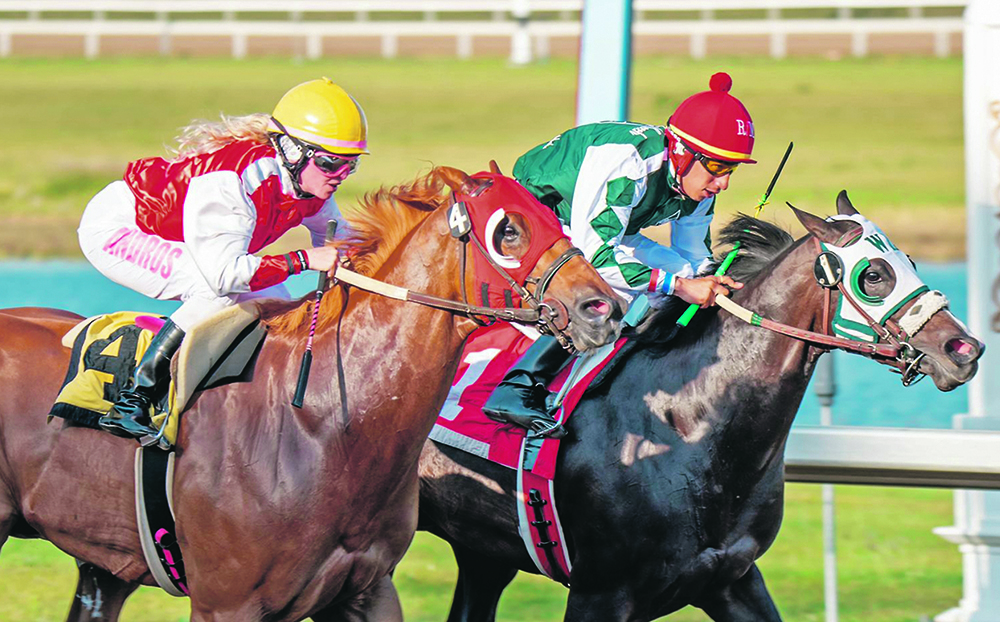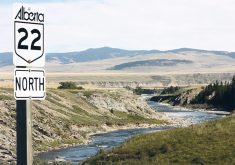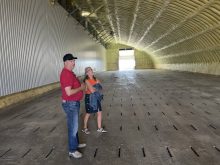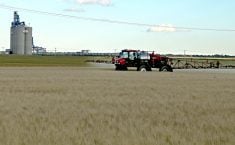Program at Olds College is designed to train students to work in the horse racing industry as grooms and exercise riders
An Alberta college wants the public to know that its doors are open for people seeking careers in horse racing.
“As a young person growing up, I had no clue how to get into a career with horses,” said Theresa Sealy, instructor/co-ordinator for the Olds College Continuing Education Exercise Rider and Groom Programs. “I didn’t know that there was even a possibility of having a career with horses.”
Many people think of horse racing as a rich person’s hobby, said Sealy. However, a wide range of careers are open to anyone with a good work ethic and a passion for horses, she said.
Read Also

New coal mine proposal met with old concerns
A smaller version of the previously rejected Grassy Mountain coal mine project in Crowsnest Pass is back on the table, and the Livingstone Landowners Group continues to voice concerns about the environmental risks.
“And many of our graduates have gone on to do that, becoming assistant trainers and trainers and exercise riders and jockeys. There’s a never-ending kind of career path that comes along with horse racing.”
Instructor Corinne Andros graduated in 2011 and has worked as a jockey at racetracks in Canada, the United States, Morocco and Poland. She agreed that many people aren’t aware of the career opportunities in horse racing.
“It seems like a lot of people don’t even know that there’s racetracks around, even if they live down the street.”
Training at Olds College includes Professional Racetrack Groom, which costs $1,000 tuition, and Professional Racetrack Exercise Rider, which costs $1,500. Both accept only a limited number of students once per year and currently run from Jan. 16 to June 23.
They are funded by Horse Racing Alberta and instruction for both is divided into four segments. It includes earning and learning March 18 to April 28 with trainers at the Century Mile Racetrack in Nisku, Alta., south of Edmonton, followed by a paid practicum April 29 to June 23, said Sealy.
“I don’t know why we don’t have people knocking down our doors to come into the program…. You get out and you go to work in the industry — you’re guaranteed a job.”
Financial obstacles are further lowered through three scholarships of $1,000. Successful applicants studying under Professional Racetrack Groom, which only accepts up to 15 students, won’t have to pay, said Sealy.
However, enrolment has declined from the days when there was a list of people waiting to be trained as grooms, she said. It has lately averaged nine to 12 students per year, taking a further hit due to the COVID-19 pandemic, she added.
There has also been a long-term trend of people moving away from rural areas and agriculture, said Sealy.
She recommended people who lack experience with horses or the racing industry should first attend the groom program “to get a good foundation of what horse racing is all about, and then come back the next year to take the exercise rider program. And the exercise rider program is what leads you into becoming a jockey if that’s what is your main area of interest.”
Many students have lately tended to be from urban areas, mostly women, said Sealy. Although the ages of student grooms have ranged from 18 to 50, those training to be exercise riders tend to be 18 to 25 because it more physically demanding, she said.


















